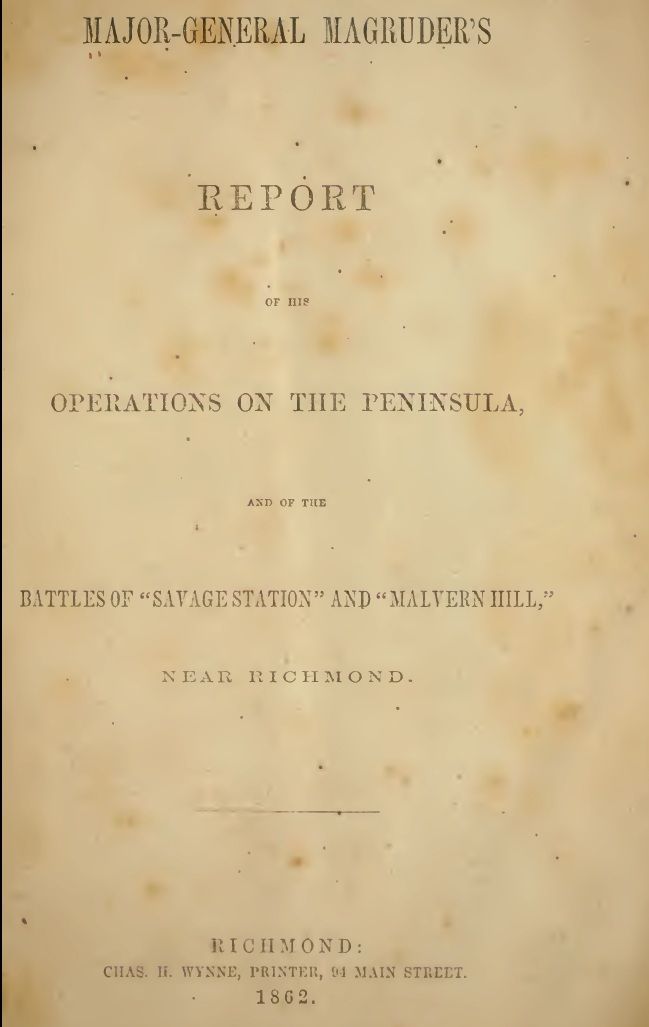
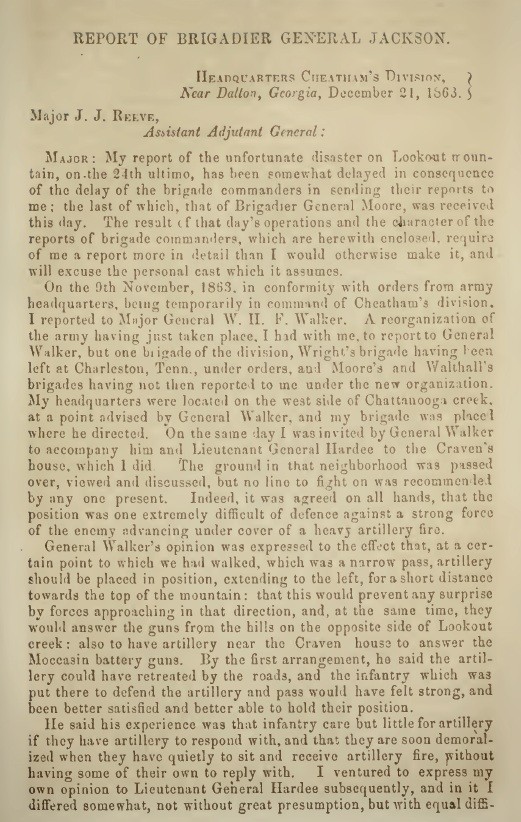
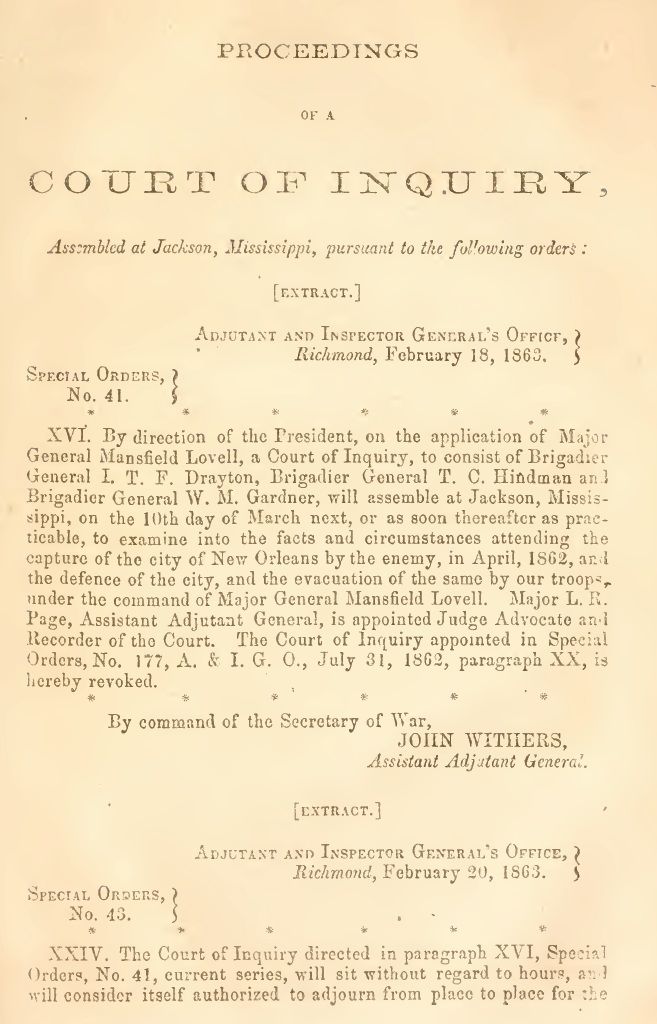
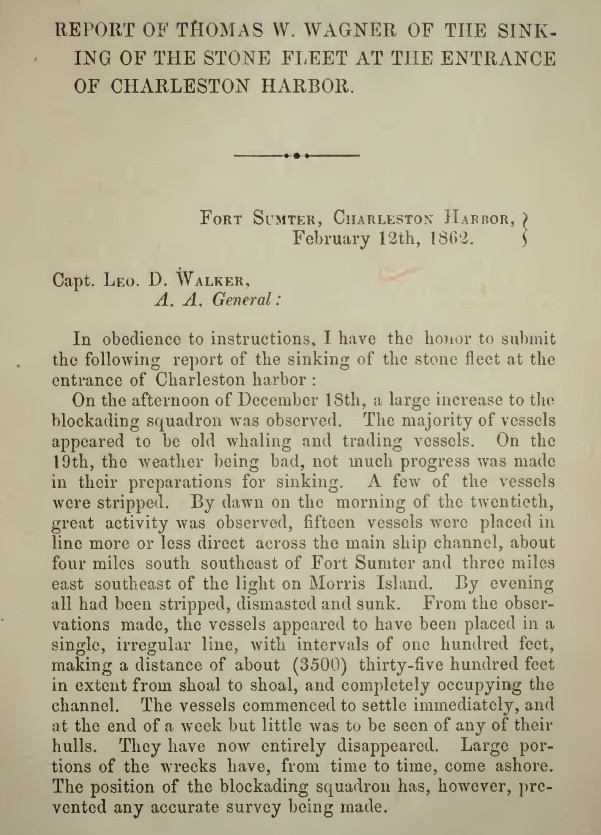
Description
Confederate Civil War Battle Reports
Timeline of Events
Note: This timeline is based solely on the events listed in the provided text and does not represent a comprehensive Civil War timeline. It focuses on the battles and events mentioned within the Confederate reports.
- Early Civil War (1861)
- Fort Sumter (Exact date unspecified, but within Governor Pickens’ administration): South Carolina troops reduce the fort. This is the event that officially began the war.
- Battle of Manassas (July 21, 1861): Confederate forces under Generals Johnston and Beauregard defeat Union forces at Manassas, also known as the First Battle of Bull Run.
- Engagement at Oak Hill, MO (Exact date unspecified): Brig. Gen. Ben McCulloch commands Confederate forces in an engagement.
- Engagement at Lewinsville (September 11, 1861): Col. J.E.B. Stuart commands Confederate forces in an engagement.
- Engagement on Greenbrier River (October 3, 1861): Brig. Gen. H.R. Jackson commands Confederate forces in an engagement.
- Engagement at Santa Rosa Island (October 8, 1861): Maj. Gen. Braxton Bragg commands Confederate forces in an engagement.
- Engagement at Leesburg (October 21-22, 1861): Brig. Gen. N.G. Evans commands Confederate forces in an engagement.
- Bombardment of Forts Walker and Beauregard (November 7, 1861): Brig. Gen. Thomas F. Drayton commands Confederate forces during a bombardment.
- Battle of Belmont (November 7, 1861): Maj. Gen. Leonidas Polk commands Confederate forces in a battle.
- Engagement at Piketon, KY (Exact date unspecified): Col. John S. Williams commands Confederate forces in an engagement.
- Battle in Alleghany Mountains (December 13, 1861): Col. Edward Johnson commands Confederate forces in a battle.
- Battle of Chustenahlah (December 26, 1861): Col. James McIntosh commands Confederate forces in a battle in the Cherokee Nation.
- 1862
- Affair at Port Royal Ferry (January 1, 1862): Brig. Gen. J.C. Pemberton commands Confederate forces at Port Royal Ferry, SC.
- Sinking of the stone fleet at Charleston Harbor (February 12, 1862): Thomas W. Wagner reports on the sinking of stone ships by the Union to block Charleston harbor.
- Fall of Fort Donelson (Exact date unspecified): Confederate War Department receives reports of the defense and loss of Fort Donelson.
- Battle of Hampton Roads (March 8, 1862): Flag Officer Franklin Buchanan commands the James River Squadron in a naval battle.
- Engagement between the steamer Harmony and the U.S. frigate Savannah (Exact date unspecified): F. Forrest reports on the engagement.
- Operations on the Peninsula, including the Battles of “Savage Station” and “Malvern Hill” (Exact dates unspecified): Maj. Gen. Magruder commands Confederate forces in these battles.
- Operations around New Orleans (Exact dates unspecified): Correspondence occurs between the Confederate War Department and General Lovell regarding the defense of New Orleans.
- 1863
- Skirmish at Olive Branch Church (Exact date unspecified): This was part of Confederate military operations in February-June 1863.
- Operations in Northwestern Virginia (Exact date unspecified): This was part of Confederate military operations in February-June 1863.
- Battle of Fleetwood (Exact date unspecified): This was part of Confederate military operations in February-June 1863.
- Engagements and Battles at Fort McAllister, GA, Fayetteville, WV, Seven Pines, VA, Stono River, SC, Richmond, Munfordsville and Perryville, KY (Exact dates unspecified): These reports are transmitted to Congress by President Davis in March and April.
- Battle of Chancellorsville (Exact date unspecified): General Robert E. Lee commands Confederate forces in a major battle. J.E.B. Stuart and Fitz Lee report on cavalry engagements at Kelleysville and W.H.F. Lee on cavalry operations in April.
- Confederate Military Operations in May, June, July: Correspondence between President Davis, Gen. Joseph E. Johnston, and the War Department regarding Johnston’s command.
- Defence of Vicksburg (Exact date unspecified): Maj. Gen. Earl Van Dorn was in command during the siege of the city and surrounding battles.
- Attack upon Baton Rouge (Exact date unspecified): Maj. Gen. Breckenridge commanded the attack on the city.
- Battles of Corinth and Hatchie Bridge (Exact dates unspecified): These are mentioned alongside the attacks at Vicksburg and Baton Rouge.
- Expedition to Hartsville, Tennessee (Exact date unspecified): This is mentioned alongside the attacks at Vicksburg and Baton Rouge.
- Affair at Pocotaligo and Yemassee (Exact date unspecified): This is mentioned alongside the attacks at Vicksburg and Baton Rouge.
- Action near Coffeeville, Mississippi (Exact date unspecified): This is mentioned alongside the attacks at Vicksburg and Baton Rouge.
- Battle of Chickamauga (Exact date unspecified): General Bragg commands Confederate forces in a major battle.
- Expedition to Beverly (Exact date unspecified): Col. Wm. L. Jackson commands the expedition.
- Evacuation of Little Rock (Exact date unspecified): Maj. Gen. Price leads the evacuation.
- Battle of Lookout Mountain (Exact date unspecified): Maj. Gen. Stevenson commands Confederate forces in a battle.
- Engagements at Knoxville, Limestone Creek, and Carter’s Station (Exact dates unspecified): Lt. Col. M.A. Haynes reports on these engagements.
- Operations in East Tennessee (September 27 – October 15, 1863): Brig. Gen. John S. Williams commands Confederate forces in operations
- Battle of Baker’s Creek (Exact date unspecified): Maj. Gen. Loring commands Confederate forces in the battle.
- Battles of Port Gibson, Baker’s Creek, and the siege of Vicksburg (Exact dates unspecified): Lt. Gen. Pemberton reports on these battles.
- Battle of Droop Mountain (November 6, 1863): Brig. Gen. Echols commands Confederate forces in this battle.
- Battle of Helena (Exact date unspecified): Lt. Gen. Holmes commands Confederate forces in the battle.
- Battle of Bristoe Station (Exact date unspecified): Lt. Gen. A.P. Hill commands Confederate forces in the battle.
- Expedition into East Tennessee (Exact date unspecified): Maj. Gen. Stevenson leads the expedition.
- Reports on Military Operations from March 1862 to November 1863 (Transmitted December 19, 1863): These are summarized military operations from the period.
- 1864 (and later)
- Operations in the Trans-Mississippi District (Exact date unspecified): Maj. Gen. Hindman reports on his operations.
- Operations of the Army of Tennessee (Exact date unspecified): General Joseph E. Johnston’s report is transmitted by President Davis in October 1864.
Cast of Characters
- Confederate Leaders:Anderson, Major (Full name unknown): Occupied Fort Sumter at the start of the war.
- Beauregard, General P.G.T.: Commanded Confederate forces at the Battle of Manassas.
- Bragg, Braxton, Maj. Gen.: Commanded Confederate forces at the engagement at Santa Rosa Island and the Battle of Chickamauga.
- Breckenridge, Maj. Gen.: Commanded Confederate forces in the attack upon Baton Rouge.
- Buchanan, Franklin, Flag Officer: Commanded the James River Squadron at the Battle of Hampton Roads.
- Davis, Jefferson: President of the Confederate States of America.
- Drayton, Thomas F., Brig. Gen.: Commanded Confederate forces during the bombardment of Forts Walker and Beauregard.
- Echols, Brig. Gen.: Commanded Confederate forces at the Battle of Droop Mountain.
- Evans, N.G., Brig. Gen.: Commanded Confederate forces at the engagement at Leesburg.
- Floyd, Brig. Gen.: Commanded Confederate forces in the battle of 10th September.
- Forrest, F.: Reported on the engagement between the steamer Harmony and the U.S. frigate Savannah.
- Hill, A.P., Lt. Gen.: Commanded Confederate forces in the Battle of Bristoe Station.
- Hindman, Maj. Gen.: Reported on his operations in the Trans-Mississippi District.
- Holmes, Lt. Gen.: Commanded Confederate forces at the Battle of Helena.
- Jackson, H.R., Brig. Gen.: Commanded Confederate forces in the engagement on Greenbrier River.
- Jackson, William L., Col.: Commanded the expedition to Beverly.
- Johnston, Edward, Col.: Commanded Confederate forces in the Battle in Alleghany Mountains.
- Johnston, Joseph E., General: A high-ranking Confederate general, involved in various operations, including the defense of Atlanta and communications with President Davis.
- Lee, Fitz, Brig. Gen.: Reported on cavalry engagements at Kelleysville.
- Lee, Robert E., General: Commanded Confederate forces at the Battle of Chancellorsville and other engagements.
- Lee, W.H.F., Brig. Gen.: Reported on cavalry operations of April 14-15, 1863.
- Loring, Maj. Gen.: Commanded Confederate forces at the Battle of Baker’s Creek.
- Lovell, General: Involved in correspondence with the War Department regarding the defense of New Orleans.
- Magruder, Maj. Gen.: Commanded Confederate forces in operations on the Peninsula, including the Battles of Savage Station and Malvern Hill.
- McCulloch, Ben, Brig. Gen.: Commanded Confederate forces in the engagement at Oak Hill, MO.
- McIntosh, James, Col.: Commanded Confederate forces at the Battle of Chustenahlah.
- Pemberton, J.C., Brig. Gen., later Lt. General: Commanded Confederate forces at Port Royal Ferry and in the defense of Vicksburg.
- Pickens, Governor (Full name not given): Governor of South Carolina during the reduction of Fort Sumter.
- Polk, Leonidas, Major-General: Commanded Confederate forces in the Battle of Belmont.
- Price, Maj. Gen.: Commanded Confederate forces during the evacuation of Little Rock.
- Simonton, Col.: Commanded a brigade involved in the battle at Fort Donelson.
- Stevenson, Maj. Gen.: Commanded Confederate forces at the Battle of Lookout Mountain and in the expedition into East Tennessee.
- Stuart, J.E.B., Col., later Major General: Commanded Confederate forces in the engagement at Lewinsville and at various cavalry engagements.
- Van Dorn, Earl, Major General: Commanded Confederate forces in the defense of Vicksburg.
- Williams, John S., Col., later Brig. Gen.: Commanded Confederate forces at the engagement at Piketon, KY and in operations in East Tennessee in late 1863.
- Other Individuals Mentioned:De Renne, Wymberley Jones: Owner of private collections of Robert E. Lee’s letters and dispatches.
- Haynes, M.A., Lt. Col.: Reported on engagements at Knoxville, Limestone Creek, and Carter’s Station.
- Wagner, Thomas W.: Reported on the sinking of the stone fleet at Charleston Harbor.
This collection comprises 3,371 pages of official Confederate battle reports compiled during the Civil War by the Confederate military and its Department of War. These documents, printed within the Confederacy itself between secession and surrender, detail various engagements. Included are accounts of Fort Sumter’s fall, the First Battle of Manassas (with reports from Beauregard and Johnston), and numerous other battles throughout 1861 and 1862, such as those at Oak Hill, Lewinsville, Greenbrier River, Santa Rosa Island, Leesburg, Piketon, the Allegheny Mountains, Chustenahlah, Belmont, Savage Station, Malvern Hill, and Roanoke Island. Also present is a report on the Port Royal Ferry incident.
This document is a collection of Confederate Navy and War Department reports from 1862-1863, covering various naval and military engagements. These include Buchanan’s account of the Hampton Roads battle, Forrest’s report on the Harmony and Savannah fight, and President Davis’s transmission of Fort Donelson reports. Other documents detail the sinking of the stone fleet at Charleston, Merrimac repairs, the losses at Forts Henry and Donelson, New Orleans defenses, Pamunkey River ship losses, and battles from February to June 1863, including those at Olive Branch Church, Fleetwood, Fort McAllister, Fayetteville, Seven Pines, Stono River, Richmond, Munfordsville, and Perryville.
The reports were submitted to Congress at various times between 1863 and 1864. This collection comprises official military documents from the American Civil War, published in 1863 and 1864. The documents include accounts of key battles such as Chancellorsville, Vicksburg, Chickamauga, and Lookout Mountain, along with reports on smaller engagements and campaigns across various theaters of war. Correspondence between President Davis and General Johnston, as well as other high-ranking officers, is also included.
Further reports detail cavalry actions, expeditions, and the defense of key locations like New Orleans. Several reports cover operations in Tennessee, Mississippi, and Arkansas, as well as East Tennessee. The collection’s publication was authorized by Congress. General Johnston detailed his actions in Mississippi and eastern Louisiana, including Lieutenant General Pemberton’s accounts of the Port Gibson, Baker’s Creek, and Vicksburg battles (1864).
Brigadier General Echols described the Droop Mountain battle (fought November 6, 1863), in a report filed November 19, 1863, from his Southwestern Virginia brigade headquarters.
President Davis forwarded to Congress official reports detailing Confederate military activities from March 1862 to November 1863 (1864).
Lieutenant General Holmes’s Helena battle report, Lieutenant General Hill’s Bristoe Station battle report, and Major General Stevenson’s East Tennessee expedition report were all submitted (1864).
President Davis transmitted a copy of General Johnston’s October 20, 1864, report on the Army of Tennessee’s operations (1865), as provided by the Confederate War Secretary.
A 1915 publication presented previously unseen correspondence between General Robert E. Lee and Jefferson Davis and the Confederate War Department (1862-1865).
Related products
-
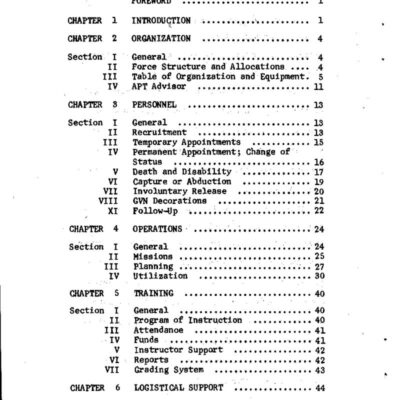
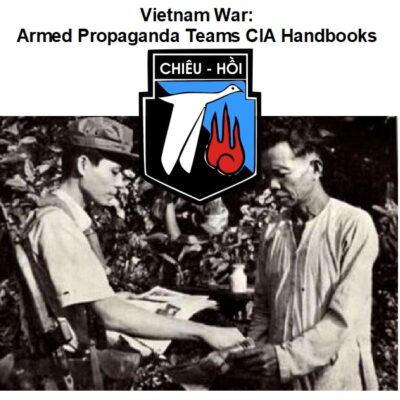
Vietnam War: Armed Propaganda Teams CIA Handbooks
$1.99 Add to Cart -
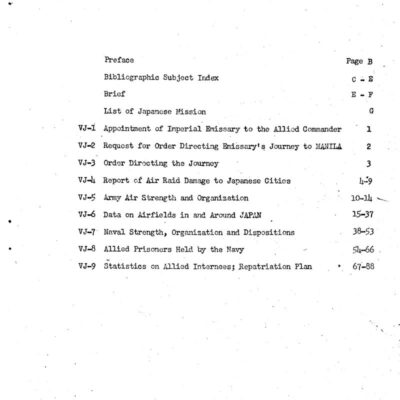
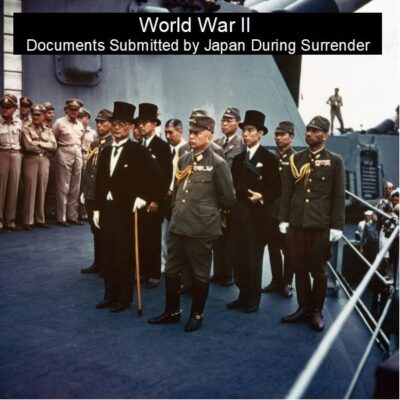
Japan’s Surrender Documents from World War II
$1.99 Add to Cart -
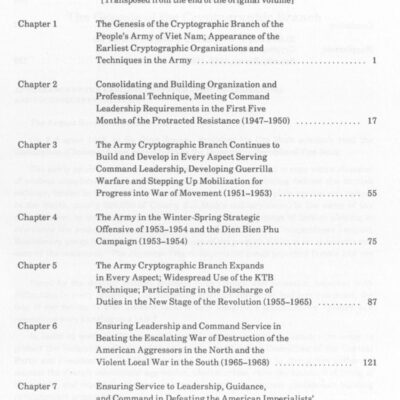

Vietnam War: Cryptology in North Vietnam – NSA Official History
$4.90 Add to Cart -
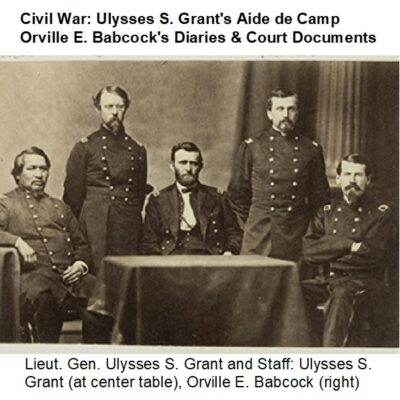
Civil War Ulysses S. Grant’s Aide de Camp Orville E. Babcock’s Diaries & Court Documents
$3.94 Add to Cart